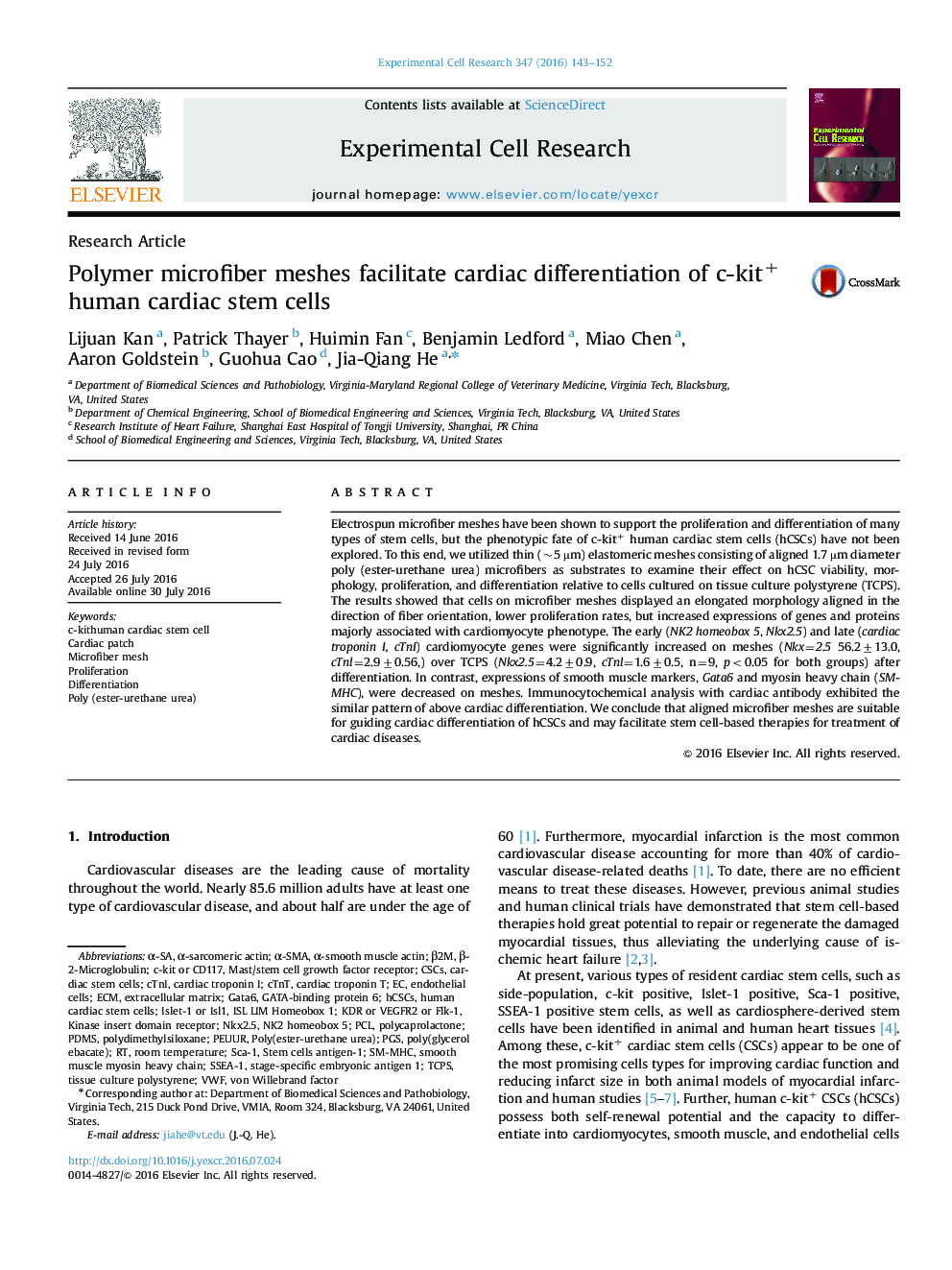| Article ID | Journal | Published Year | Pages | File Type |
|---|---|---|---|---|
| 2129893 | Experimental Cell Research | 2016 | 10 Pages |
•First study to characterize c-kit+ human cardiac stem cells on microfiber meshes.•Microfiber meshes seem reducing cell proliferation, but no effect on cell viability.•Microfiber meshes facilitate the elongation of human cardiac stem cells in culture.•Cardiac but not smooth muscle differentiation were enhanced on microfiber meshes.•Microfiber meshes may be used as cardiac patches in cell-based cardiac therapy.
Electrospun microfiber meshes have been shown to support the proliferation and differentiation of many types of stem cells, but the phenotypic fate of c-kit+ human cardiac stem cells (hCSCs) have not been explored. To this end, we utilized thin (~5 µm) elastomeric meshes consisting of aligned 1.7 µm diameter poly (ester-urethane urea) microfibers as substrates to examine their effect on hCSC viability, morphology, proliferation, and differentiation relative to cells cultured on tissue culture polystyrene (TCPS). The results showed that cells on microfiber meshes displayed an elongated morphology aligned in the direction of fiber orientation, lower proliferation rates, but increased expressions of genes and proteins majorly associated with cardiomyocyte phenotype. The early (NK2 homeobox 5, Nkx2.5) and late (cardiac troponin I, cTnI) cardiomyocyte genes were significantly increased on meshes (Nkx=2.5 56.2±13.0, cTnl=2.9±0.56,) over TCPS (Nkx2.5=4.2±0.9, cTnl=1.6±0.5, n=9, p<0.05 for both groups) after differentiation. In contrast, expressions of smooth muscle markers, Gata6 and myosin heavy chain (SM-MHC), were decreased on meshes. Immunocytochemical analysis with cardiac antibody exhibited the similar pattern of above cardiac differentiation. We conclude that aligned microfiber meshes are suitable for guiding cardiac differentiation of hCSCs and may facilitate stem cell-based therapies for treatment of cardiac diseases.
